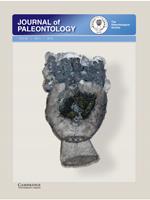Two new Early Ordovician crinoids have been discovered in Gondwanan rocks of northwest Argentina. Ramseyocrinus argentinus n. sp., among the most complete for the genus, aids in reconstructing key morphology. Ramseyocrinus is unorthodox with just four radials forming the entire cup, these articulating to five arms above and a tetrameric stem below. Evidence is presented radials comprise A, B, D, and E ray elements (C absent) with B and D radials adjoining to form a compound facet for the C arm. Thus the cup entirely lacks posterior plating; an elongate anal sac projects from the CD tegmen region alongside the C arm. Cup synapomorphies closely link Ramseyocrinus and the Middle Ordovician Tetragonocrinus; inclusion of this clade within disparids is tenuous. Quechuacrinus ticsa n. gen. and sp., increases the paleogeographic range of reteocrinid camerates, previously documented only from Laurentia. This taxon expresses synapomorphies characterizing the Late Ordovician Reteocrinus, demonstrating the antiquity of this morphotype.
How to translate text using browser tools
1 July 2015
South America's earliest (Ordovician, Floian) crinoids
Thomas E. Guensburg,
Beatriz G. Waisfeld
ACCESS THE FULL ARTICLE

Journal of Paleontology
Vol. 89 • No. 4
July 2015
Vol. 89 • No. 4
July 2015




